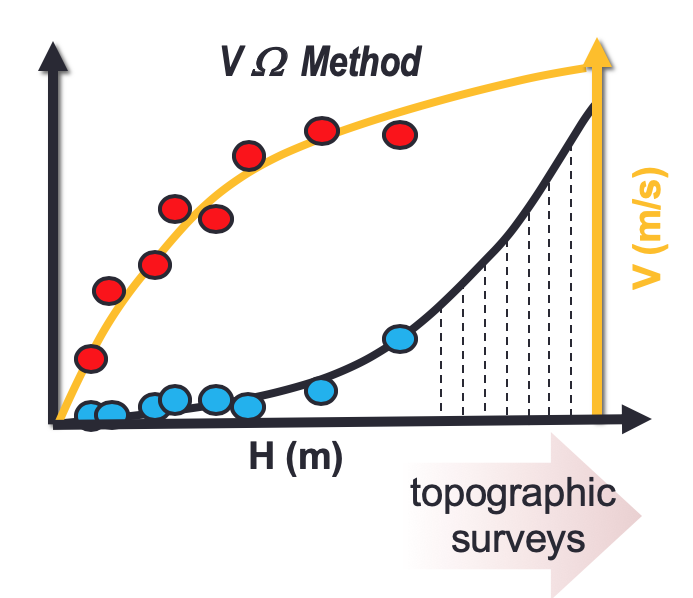River monitoring is a critical issue for hydrological modelling that relies strongly on the use of flow rating curves (FRCs). In most cases, these functions are derived by least-squares fitting which usually leads to good performance indices, even when based on a limited range of data that especially lack high flow observations. In this context, cross-section geometry is a controlling factor which is not fully exploited in classical approaches. In fact, river discharge is obtained as the product of two factors: 1) the area of the wetted cross-section and 2) the cross-sectionally averaged velocity. Both factors can be expressed as a function of the river stage, defining a viable alternative in the derivation of FRCs. This makes it possible to exploit information about cross-section geometry limiting, at least partially, the uncertainty in the extrapolation of discharge at higher flow values. Numerical analyses and field data confirm the reliability of the proposed procedure for the derivation of FRCs.

How to cite: Manfreda, S., On the derivation of flow rating-curves in data-scarce environments, Journal of Hydrogy, 562, 151-154 (doi: 10.1016/j.jhydrol.2018.04.058) 2018.
